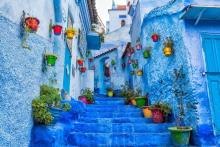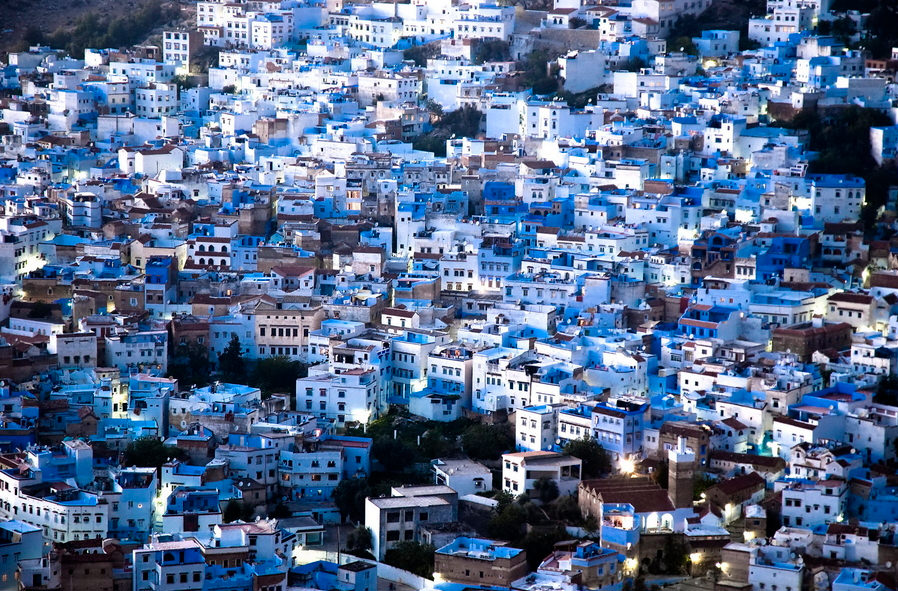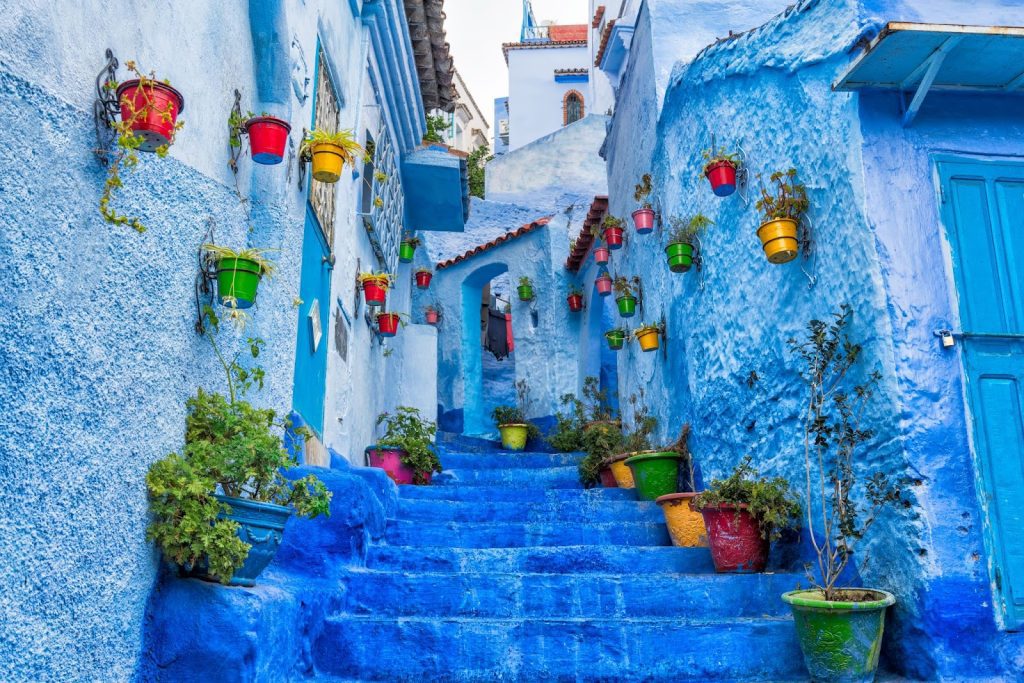
The Blue City In Morocco
Chefchaouen or Chaouen is a city in northwestern Morocco, built 600 m above sea level at the foot of the Kelaa and Meggou mountains, on the Rif chain. It is the capital of the homonymous province. Its population is 42,786.
The name of the city comes from the Berber achawen, meaning “the horns”1, due to the mountain peaks which dominate and surround it.

Chefchaouen
Initially instigated in 1415, Chefchaouen was founded in 1471 and then completed in 1480 by Sharif Ali ibn Rashid al-Alami, returning from a warlike stay in the kingdom of Granada2. The city subsequently welcomed a population composed mainly of Andalusians and Megorachim then of Moriscos and remained prohibited to Christians on pain of death. Only the explorer Charles de Foucauld defied the ban in 1883.
Between 1471 and 1561, the city was governed by the Banu Rachid dynasty, descendants of its founder, nominally vassals of the Wattassid sultans, and would be reunited in Morocco by the Saadians.
The town sits at the foot of Jebel Mezedjel, with horn-like ridges from which it takes its name. Jebel Beni Hassan is opposite, on the other side of the valley, to the west, it extends further south and takes the name of Jebel el Akhmas.
Chefchaouen has taken advantage of its isolation in the shelter of the mountains, far enough from the coast and therefore from the Portuguese.

The province has, in the field of tourism, significant and diversified potentialities made up of historical monuments, numerous sandy beaches and vast forests with a very varied fauna and flora5. The main tourist sites of the province are:
- the city of Chefchaouen
- the source of Ras El Maa (3 km from the city of Chefchaouen)
- the old medina with the kasbah
- the waterfalls and the mosque of Cherafat
- the forest of Talassemtane
- the cave of Toughoubite
- the bridge of God in Akchour
On November 20, 2010, along with three other Mediterranean communities including Soria in Spain, Coron in Greece and Cilento in Italy, the city of Chaouen was inscribed6 on the Representative List of the Intangible Cultural Heritage of Humanity by UNESCO. This registration was made possible thanks to its emblematic dietary practice of the Mediterranean diet: "this is characterized by a nutritional model that has remained constant over time and whose main ingredients are olive oil, cereals, fruits and fresh or dried vegetables, a limited proportion of fish, dairy products and meat, and many condiments and spices”.







